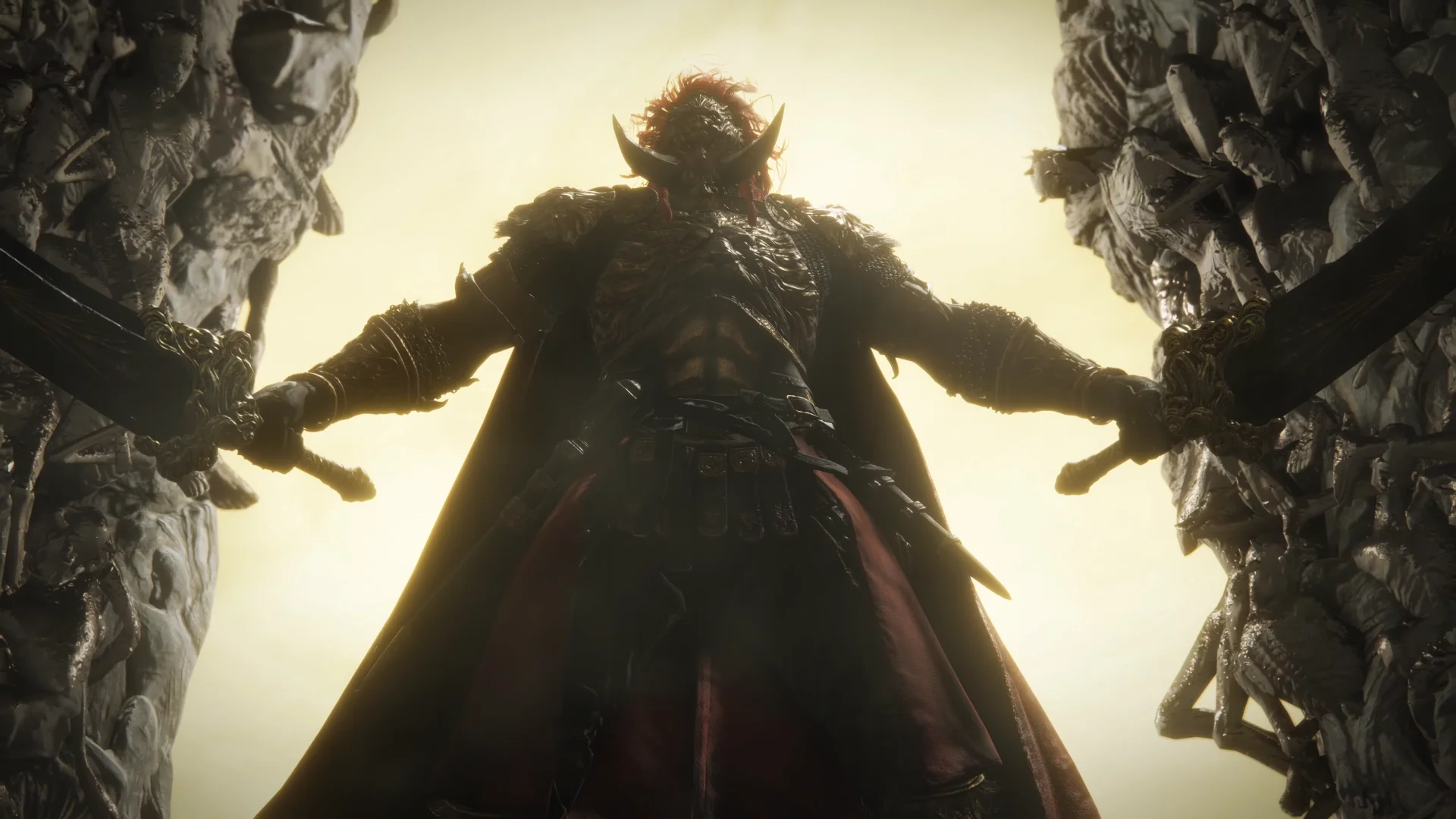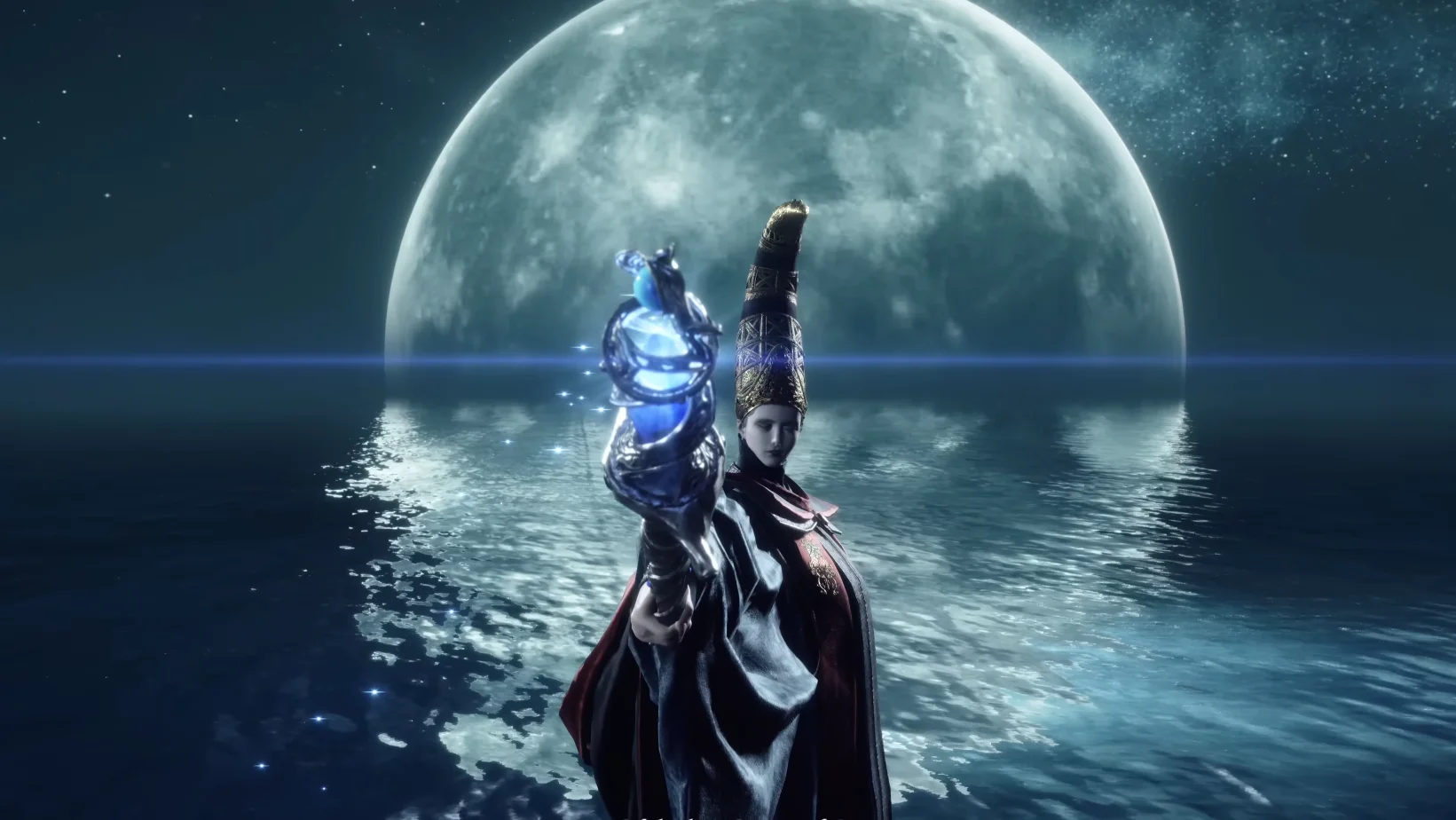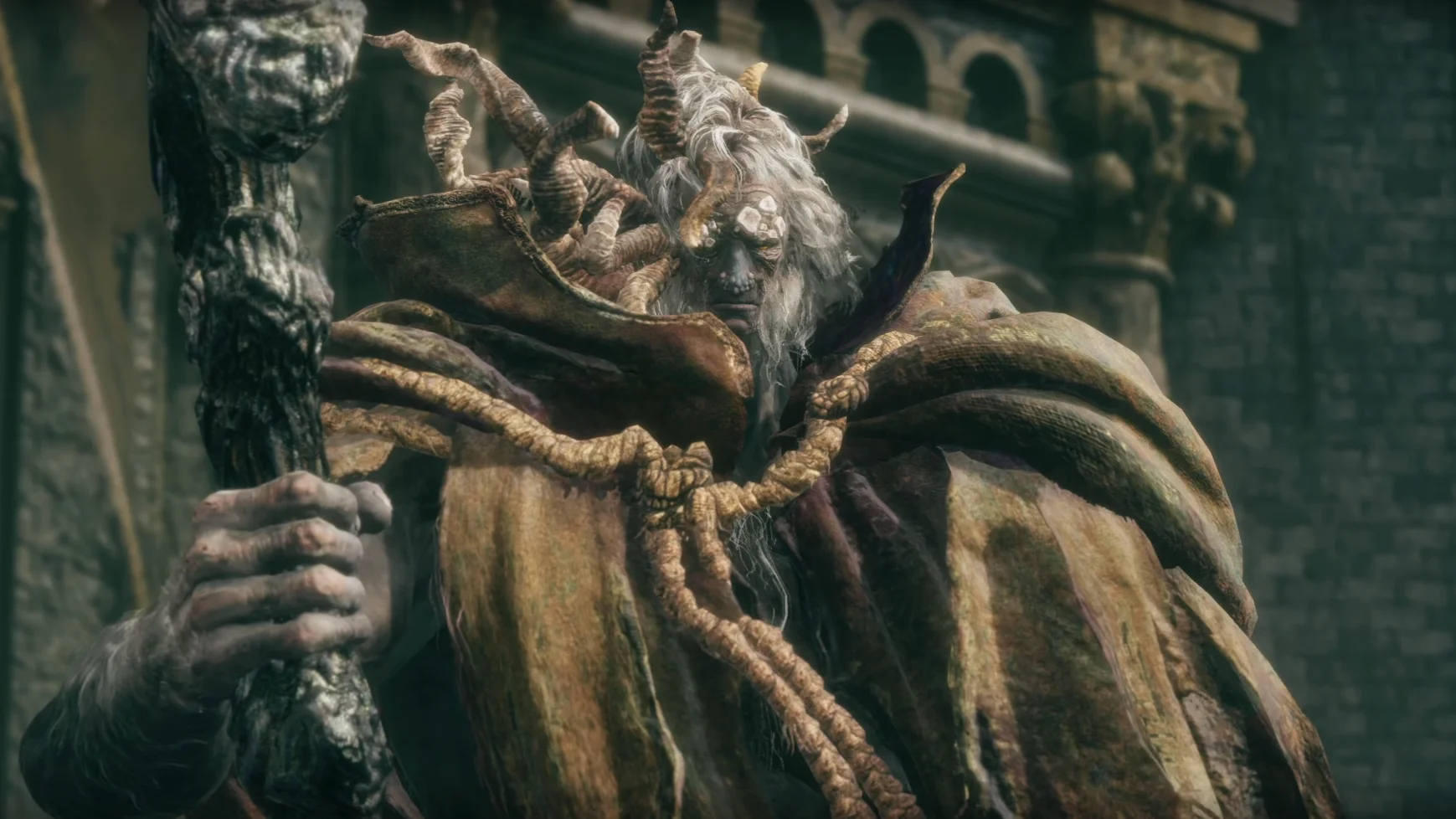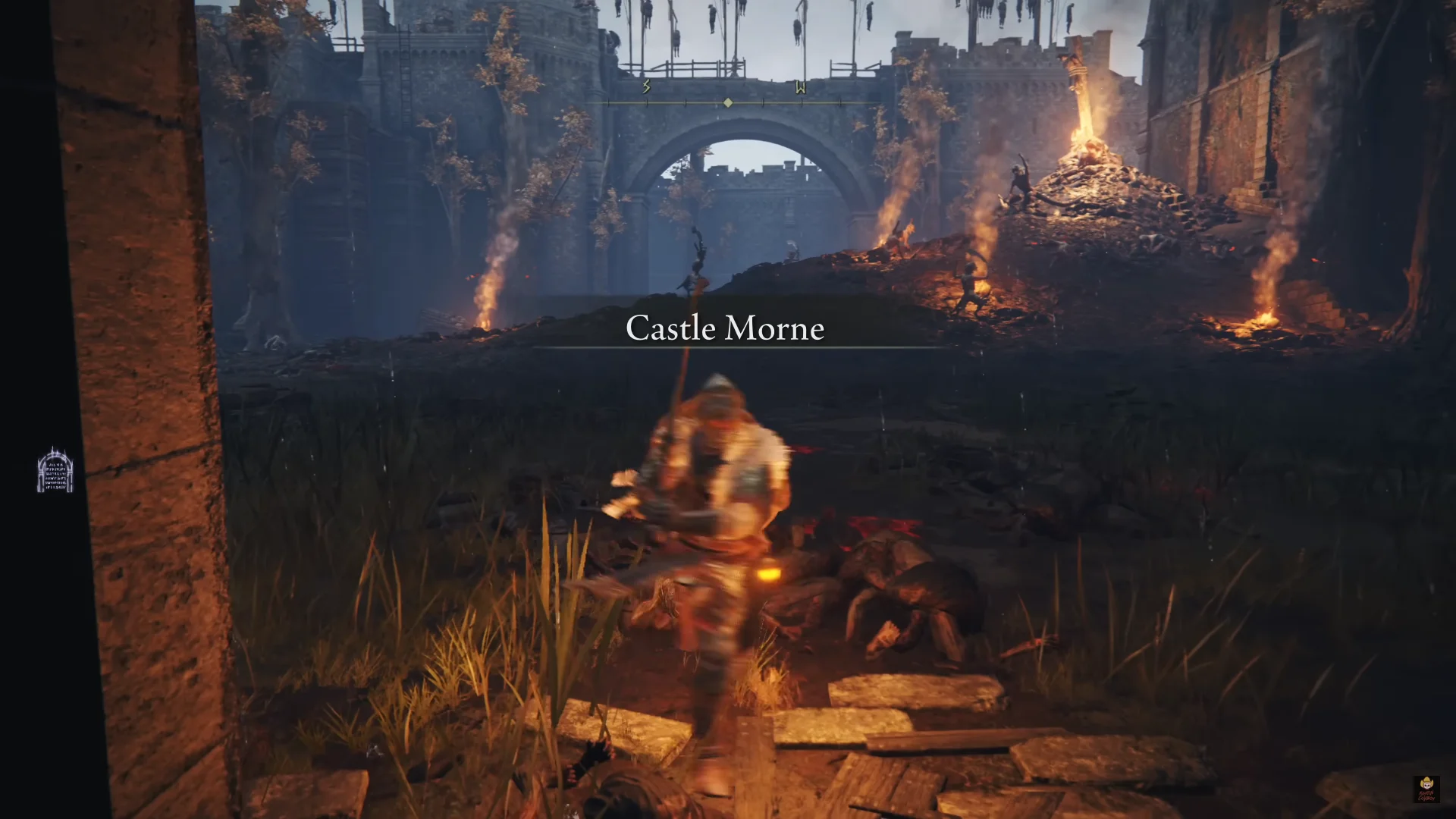· Elden Ring · 14 min read
Godrick the Grafted: A Tale of Ambition and Ancestry in the Lands Between
A descendant of the golden lineage, Godrick's story is one of ambition, desperation, and a relentless pursuit of power. As we delve into the tapestry of Godrick's life, we uncover a narrative that intertwines familial dynamics, cultural significance, and a profound struggle for dominance.

From his modest beginnings as the runt of his kin to his rise as a formidable bearer of a Great Rune, Godrick’s journey is marked by his notorious practice of grafting—an embodiment of his defiance against his limitations and the expectations of his lineage.
Godrick Lore: The Origins and Lineage
Godrick, the Grafted, is a complex figure within the golden lineage, an intricate tapestry woven from ambition and ancestry. His bloodline traces back to Godfrey, the first Tarnished, whose legacy is steeped in the history of the Lands Between. This connection to the golden lineage gives Godrick both a sense of entitlement and an insatiable desire to reclaim what he sees as his birthright. As a descendant of the golden lineage, Godrick’s ambitions are deeply rooted in the history and expectations of his forebears. His actions, including his notorious practice of grafting, reflect a desperate hunger to emulate the grandeur of the Erdtree and its golden order.
The Chapel of Anticipation and its surroundings, intertwined with the threads of the golden order, symbolize the Tarnished’s return and the restoration of the Elden Ring. Godrick’s presence in these hallowed grounds, evidenced by the grafted scion and the strategically destroyed paths, underscores his determination to thwart any challenge to his aspirations. The golden hue that permeates the chapel and its environs is emblematic of the grace that once guided the Tarnished, now twisted by Godrick’s ambitions. His attempts to recreate the Erdtree through grafting and his desire for the throne are driven by a longing to restore the glory of the golden lineage, even as his actions reveal a profound disconnect from its true essence.
From Runt of the Litter to Bearer of a Shard
Godrick the Grafted, once the runt of his kin, embarked on a tumultuous journey to become a formidable bearer of a Great Rune. Initially overshadowed by the illustrious figures of the golden lineage, Godrick was seen as a mere shadow of his ancestors, lacking the prowess and majesty that defined them. Yet, driven by an insatiable ambition, he sought to transcend his perceived insignificance. His path was fraught with challenges, including the disdain and ridicule of his peers who doubted his potential. Recognizing that conventional means would not suffice, Godrick resorted to the notorious practice of grafting, a desperate strategy that would become his signature and a testament to his resolve.
Grafting for Godrick was more than a grotesque augmentation—it was his declaration of defiance against his own limitations and the expectations of his lineage. By grafting limbs and other appendages onto himself, Godrick believed he could assimilate the strength and abilities of those he conquered, piecing together a power that was inherently his own. This macabre practice not only augmented his physical prowess but also served as a psychological weapon, instilling fear in those who dared to oppose him.
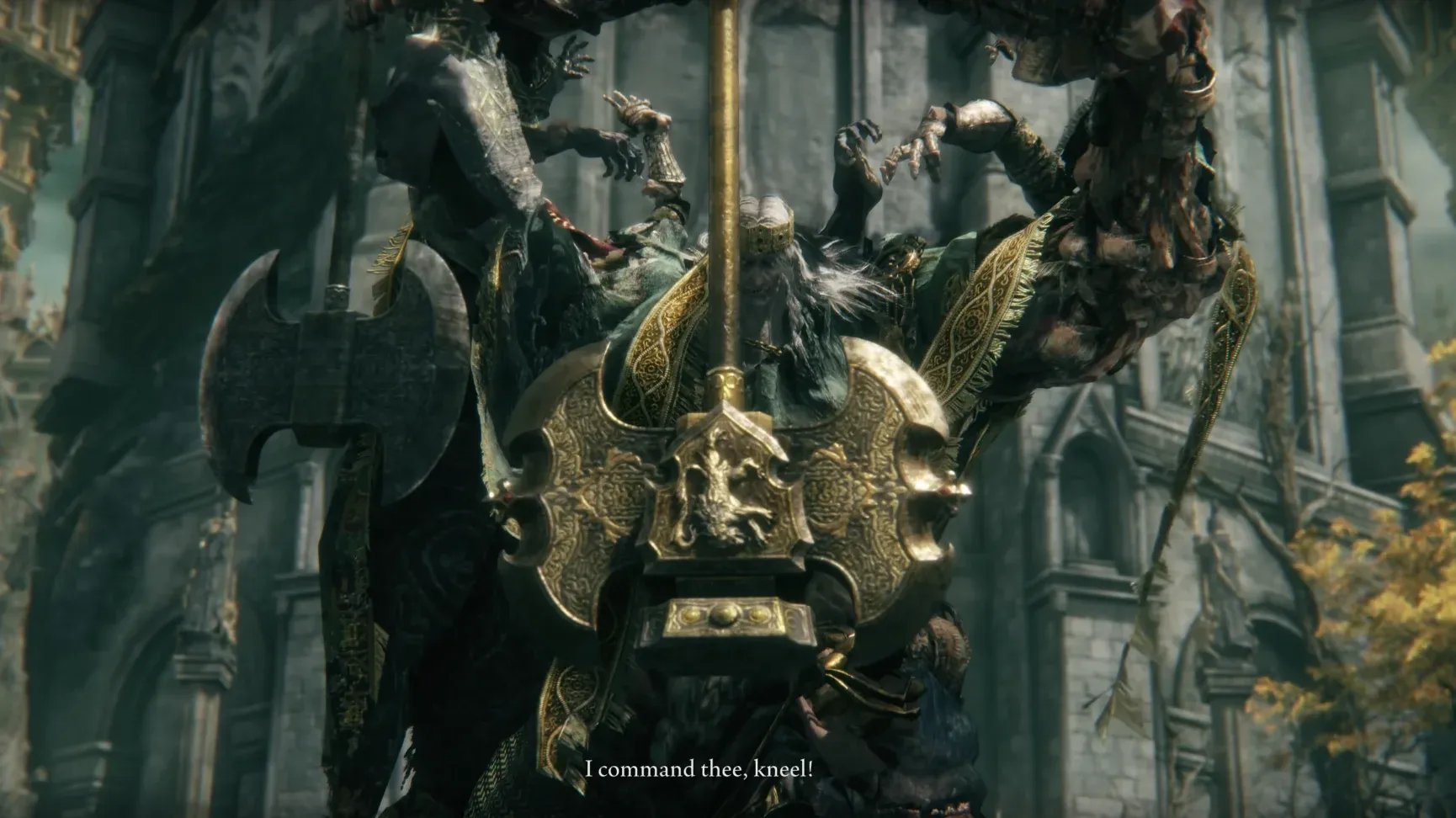
His fortress, Castle Stormveil, became a testament to his newfound strength, a place where golden leaves and grafted horrors alike bore witness to his ascent. Through his tenacity and unyielding ambition, Godrick clawed his way from obscurity to prominence, claiming a Great Rune and cementing his place among the demigods of the Lands Between.
The Symbolism and Significance of Grafting in Godrick’s Quest for Power
Grafting, in Godrick’s quest for power, is a stark metaphor for his desperation and relentless ambition to become an Elden Lord. This grotesque practice, involving the amalgamation of disparate limbs and bodies, symbolizes Godrick’s insatiable desire to augment his form. It reflects his belief that power can be achieved by accumulating and integrating strength from others. The mangled golden-leaved trees in Stormveil, unique in their reflective metallic gold, further symbolize his futile attempts to emulate the divine as he tries to recreate the splendor of the Erdtree through horticultural grafting. This pursuit underscores his yearning for legitimacy and reverence and highlights his willingness to transgress natural boundaries in the pursuit of dominance.
In the Lands Between, Godrick’s grafting is perceived with a mix of horror and disdain, a testament to his reputation as a tyrant who seeks power at any cost. The grafted scion at the Chapel of Anticipation serves as a chilling reminder of his ambition, standing guard to eliminate any Tarnished daring to challenge his claim to lordship. Yet, this grotesque manifestation of his power reveals the underlying insecurity that plagues Godrick—his fear of inadequacy and the realization that he lacks the innate grace of the true golden lineage. Through grafting, Godrick attempts to construct a facade of strength, masking his inherent weaknesses while exposing the depths of his desperation. This practice, while augmenting his physical form, ultimately alienates him from the divinity he aspires to, as he becomes a monstrous amalgamation of ambition and fear, rather than a revered Elden Lord.
Godrick’s Role in the Shattering and His Desire to Become Elden Lord
Godrick the Grafted’s involvement in the Shattering reveals a figure driven by ambition but overshadowed by his limitations. As a descendant of the golden lineage, Godrick harbors aspirations to claim the title of Elden Lord. However, his presence in the Shattering, a cataclysmic event that fractured the Elden Ring, is marked by desperation. While other demigods wield considerable power, Godrick’s ambitions are stymied by his status as a lesser figure, prompting him to resort to elaborate schemes and symbolic gestures to assert his claim. His presence at the Chapel of Anticipation, guarding the path with grafted scions and dismantling routes to Liurnia, underscores his determination to thwart the Tarnished who might challenge his aspirations.
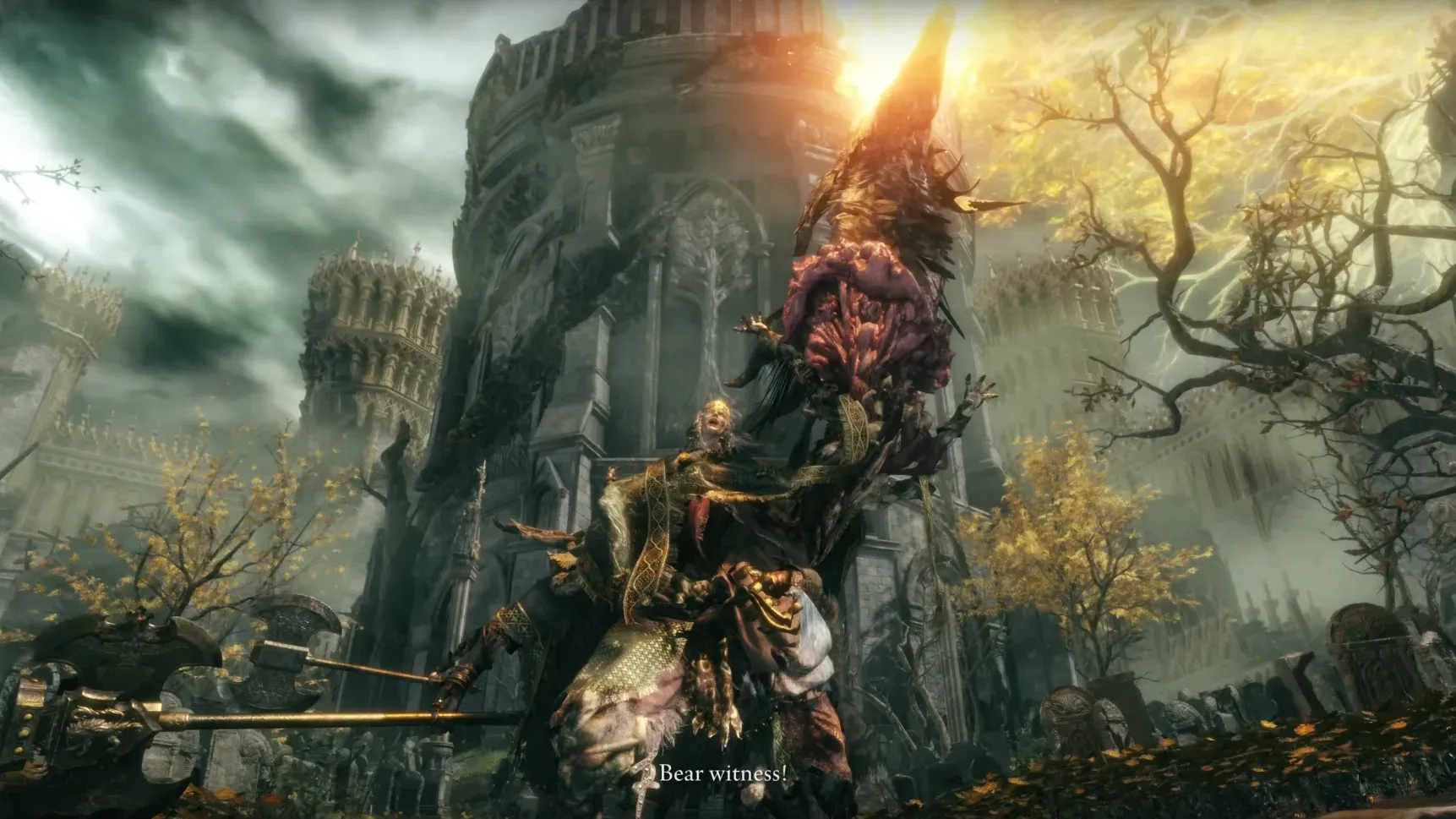
Godrick’s desire for the throne is further illustrated by his attempts to manipulate the golden residue and vegetation within the Lands Between. These efforts reflect his yearning to embody the grace and authority of the Golden Order, despite his shortcomings. Godrick’s futile attempts to recreate an Erdtree through grafting and his isolationist tactics in Stormveil signify not only his ambitions but also his recognition of his inadequacies. His actions suggest a profound struggle to redefine his place among the demigods, seeking validation through the manipulation of the very land he seeks to rule. In his quest for dominance, Godrick’s role in the Shattering becomes a testament to both his tenacity and his tragic inability to rise above his perceived insignificance.
Godrick and Other Demigods in the Lands Between
In the intricate tapestry of the Lands Between, Godrick the Grafted navigates a complex web of alliances and rivalries with his fellow demigods. Despite being considered the runt of the litter, Godrick’s interactions with the other demigods reveal a nuanced landscape of power dynamics. Morgott, the Omen King, acts like a protective older brother or father figure, choosing not to seize Godrick’s rune despite having the opportunity. This relationship suggests a form of respect or familial duty that tempers the ruthless quest for power that characterizes many of their kin.
Similarly, Malenia, the Blade of Miquella, after defeating Godrick, refrains from taking his rune, possibly out of a collective understanding not to bully the “youngest brother,” highlighting a shared, albeit strained, family bond among the demigods. These interactions are pivotal in shaping Godrick’s quest for dominance. His status as an indirect descendant of the golden lineage puts him at a disadvantage, yet his sheer determination to claim a shard of the Elden Ring speaks to his courage and ambition.
The reluctance of Morgott and Malenia to strip him of his rune allows Godrick a semblance of agency in the power struggles of the Lands Between. However, this precarious position also means that Godrick must tread carefully, balancing his ambitions with the recognition of his limitations and the familial dynamics at play. His relationships with other demigods create a delicate balance of power, where his quest for dominance is constantly influenced by the actions and decisions of his more powerful kin.
Godrick’s Relationship with Other Demigods: Allies and Rivals
Godrick’s relationships with his fellow demigods blend reverence and rivalry, shaping his strategies in the Lands Between. Despite his indirect lineage, Godrick’s possession of a shard of the Elden Ring places him among once-revered heroes now tainted by power. His alliances, however tentative, are rooted in a shared understanding of the burdens and expectations of their divine heritage. Morgott, for instance, acts as a protective figure, akin to an older brother, choosing not to seize Godrick’s rune despite having the opportunity. This suggests a familial bond that transcends the ruthless power struggle.
Conversely, Godrick’s rivalry with demigods like Malenia and Radahn underscores his ambition to assert his own legitimacy and strength. While Malenia spares Godrick’s rune, her focus on more formidable opponents like Radahn indicates a dismissive acknowledgment of Godrick’s potential threat. These dynamics reflect Godrick’s precarious position; he is an underdog navigating a landscape dominated by more powerful and established demigods. His strategies are heavily influenced by his need to prove himself, whether by attempting to emulate noble warriors like Radahn or by seeking alliances that might bolster his standing. The complex interplay of reverence, rivalry, and ambition defines Godrick’s approach to his fellow demigods, driving his pursuit of power in the Lands Between.
The Influence of the Elden Ring’s Great Runes on Godrick’s Appearance and Abilities
Godrick the Grafted, in pursuit of supremacy, seeks to harness the mystical properties of the Elden Ring’s Great Runes, believing them vital to solidifying his dominion over the Lands Between. The Great Runes, embodiments of divine power, have indelibly altered Godrick’s physical form and bolstered his capabilities. Once a mere shadow among demigods, Godrick’s appearance now reflects the grotesque majesty bestowed upon him by these runes. His body, an amalgamation of grafted limbs, signifies his relentless ambition to assimilate power through the grafting of strength from others. This grotesque transformation is a testament to his desperation for dominance and a reflection of the runes’ profound influence on his being.
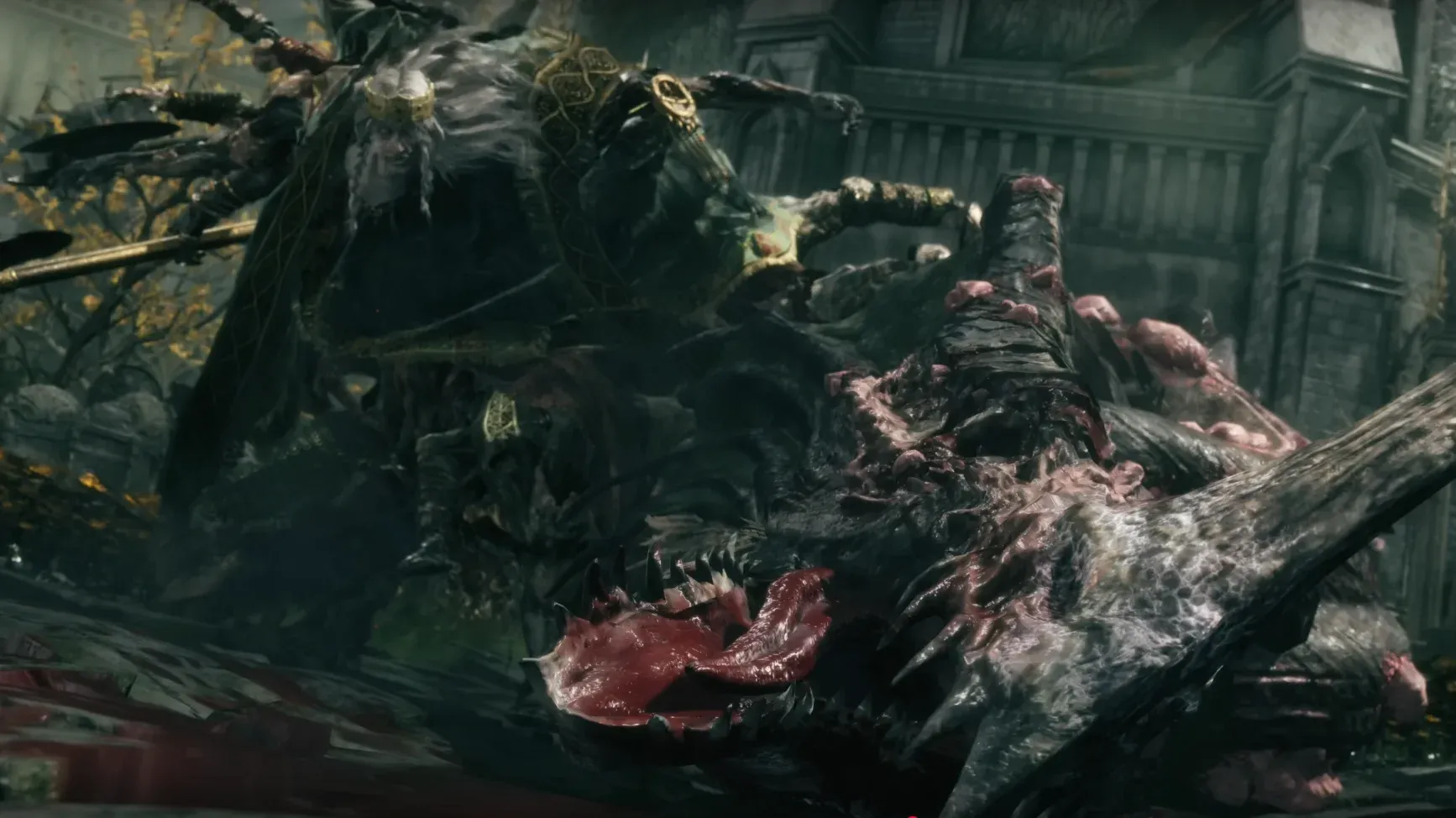
The Great Runes augment Godrick’s abilities, imbuing him with enhanced strength and resilience, enabling him to wield his newfound power with devastating effect. The mystical properties of these runes have elevated his combat prowess, allowing him to challenge even the mightiest of foes. Godrick’s grafting obsession manifests his belief that the runes’ power can be absorbed and multiplied, a belief that drives his quest for supremacy.
Yet, this quest is fraught with peril, as the very essence of the Great Runes, imbued with the grace of the Erdtree, demands a heavy toll. In his pursuit of absolute power, Godrick’s transformation demonstrates the delicate balance between ambition and madness, revealing the true cost of wielding such formidable forces.
Cultural and Religious Significance of Godrick’s Rule in the Lands Between
Godrick the Grafted’s reign over Limgrave and Stormveil Castle is a testament to the enduring influence of the golden lineage, reflecting both its grandeur and descent into tyranny. As a descendant of the first Tarnished, Godfrey, Godrick embodies the cultural and religious aspirations of the golden order, yet his rule distorts its ideals grotesquely. The Chapel of Anticipation and the reflective golden-leaved trees in Stormveil symbolize Godrick’s attempt to assert his dominion as the Lord of All that is Golden. However, these efforts are tinged with desperation and futility, as Godrick’s obsession with grafting—both human and horticultural—reveals a deep-seated desire to reclaim the lost glory of his lineage.
The inhabitants of Limgrave and Stormveil Castle live under the shadow of Godrick’s oppressive rule, where the guidance of grace has been twisted to serve his ambitions. The golden residue and symbolic elements found throughout the region underscore the religious significance of the golden order, yet they also foreshadow the disillusionment that follows the Tarnished as they navigate the Lands Between. Godrick’s governance, characterized by his ruthless pursuit of power and disregard for the sanctity of life, has transformed the cultural landscape into one of fear and subjugation.
In this way, Godrick’s rule highlights the complex interplay between cultural heritage and the corrupting influence of unchecked ambition, leaving a profound impact on the spiritual and cultural identity of the Lands Between.
The Impact of Godrick’s Rule on Limgrave and Stormveil Castle
Under Godrick’s dominion, Limgrave and Stormveil Castle have undergone significant transformations that reflect his ambitions and the tumultuous nature of his rule. Stormveil Castle’s architecture now serves as a formidable bastion against any who challenge his claim to the throne. The presence of grafted scions and strategically placed booby traps, like the collapsing path to Liurnia, illustrate Godrick’s intent to fortify his stronghold and thwart the advance of the Tarnished.
His obsession with grafting extends beyond humans; the mangled golden-leaved trees in Stormveil, unique in the Lands Between, suggest his attempts to recreate the Erdtree. This showcases his desire to control and manipulate the natural world to mirror his vision of the golden order.
Governance under Godrick is characterized by a strict and oppressive regime, overshadowing the daily lives of Limgrave’s inhabitants with fear and subjugation. His ambitions have led to the militarization of the region, with Stormveil Castle serving as both a symbol of his power and a center of his tyrannical rule. The presence of Stormveil forces, including hawk ashes and banished knights, marks a shift in the region’s security dynamics, emphasizing Godrick’s reliance on brute force and intimidation.
The golden residue found in the Chapel of Anticipation and surrounding areas metaphorically represents the loss of faith among the populace, forced to navigate the harsh realities of a world where the golden order’s promises are overshadowed by the horrors enacted under Godrick’s rule. This environment of fear and control has left a lasting impact on Limgrave, shaping the region’s identity and the spirit of its people.
Godrick’s Storm Powers: Connection to Ancient Dragons and the Crucible
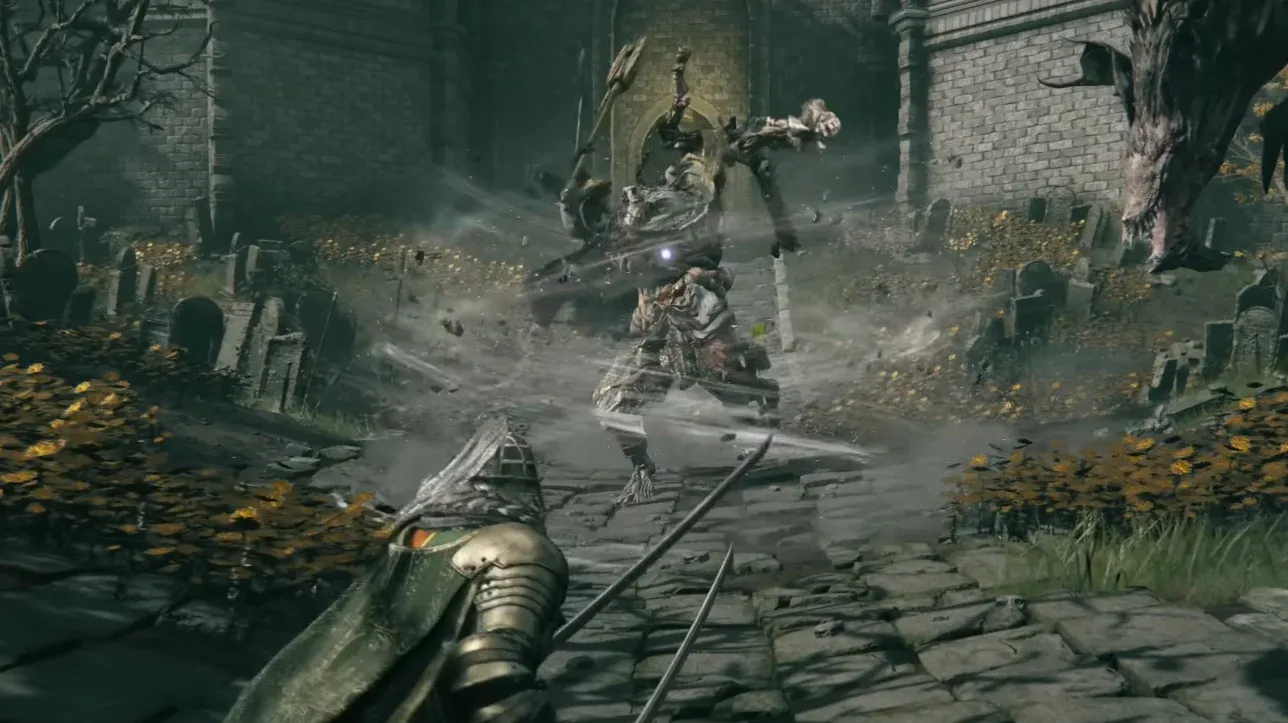
Godrick’s storm powers show the deep connections between the ancient dragons, the Crucible, and the Golden Lineage. This lineage, intertwined with the divine essence of the Crucible, channels powers of storm, frost, and lightning—elements that dominated the realm when ancient dragons like Placidusax reigned. These powers amplify Godrick’s combat prowess and serve as a symbolic link to the primordial forces that shaped the Lands Between. This connection with the Crucible and the ancient dragons elevates his status, aligning him with formidable warriors and divine beasts that have left an indelible mark on the realm’s history.
The storm powers wielded by Godrick greatly enhance his combat abilities, allowing him to harness the ferocity of a tempest in battle. These powers, likely linked to the divine beasts and the hornsent, are not just tools of destruction but also emblems of his inherited might and his claim to the ancient legacy. The presence of stormhawks and banished knights in Godrick’s domain underscores this connection, as they are bound to the ancient dragons and the Crucible’s power. Through these forces, Godrick asserts his dominance over Limgrave and Stormveil Castle and cements his place within the storied lineage of the Lands Between, drawing upon the elemental fury that once heralded the age of dragons.
Conclusion
Godrick the Grafted’s legacy is a testament to the intricate interplay of ambition, heritage, and power within the Lands Between. His relentless pursuit of dominance, fueled by a desire to transcend his limitations and claim the title of Elden Lord, has left an indelible mark on the regions of Limgrave and Stormveil Castle. Despite his formidable abilities and strategic alliances, Godrick’s story is ultimately one of tragic ambition—a reflection of the corrupting influence of unchecked power and the profound impact of cultural and familial expectations. In the end, Godrick’s tale serves as a poignant reminder of the delicate balance between aspiration and madness in the pursuit of greatness.
